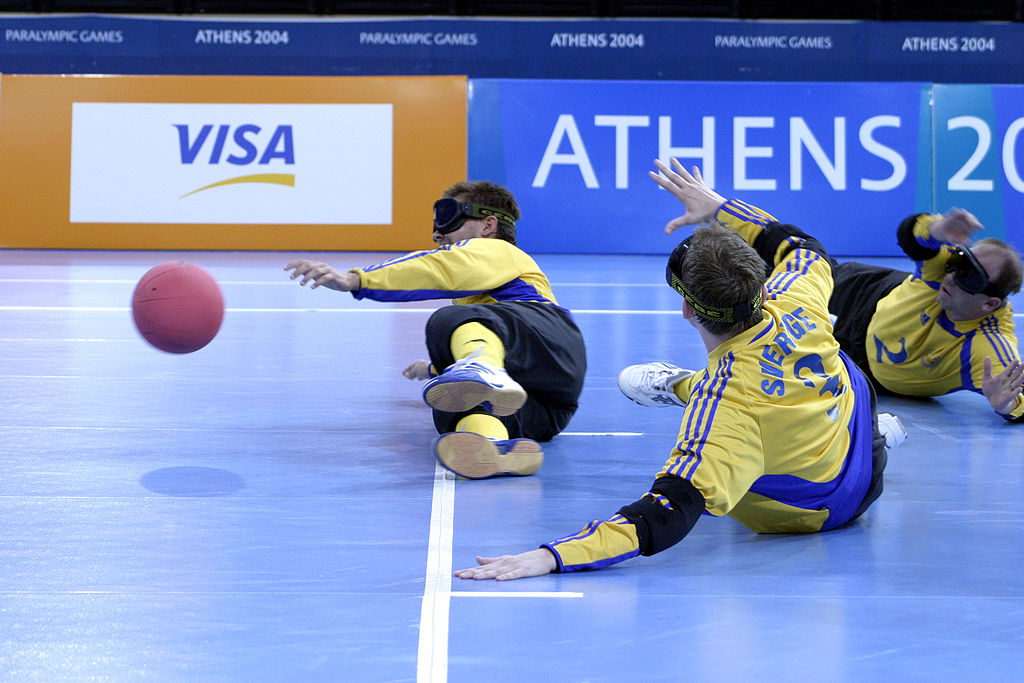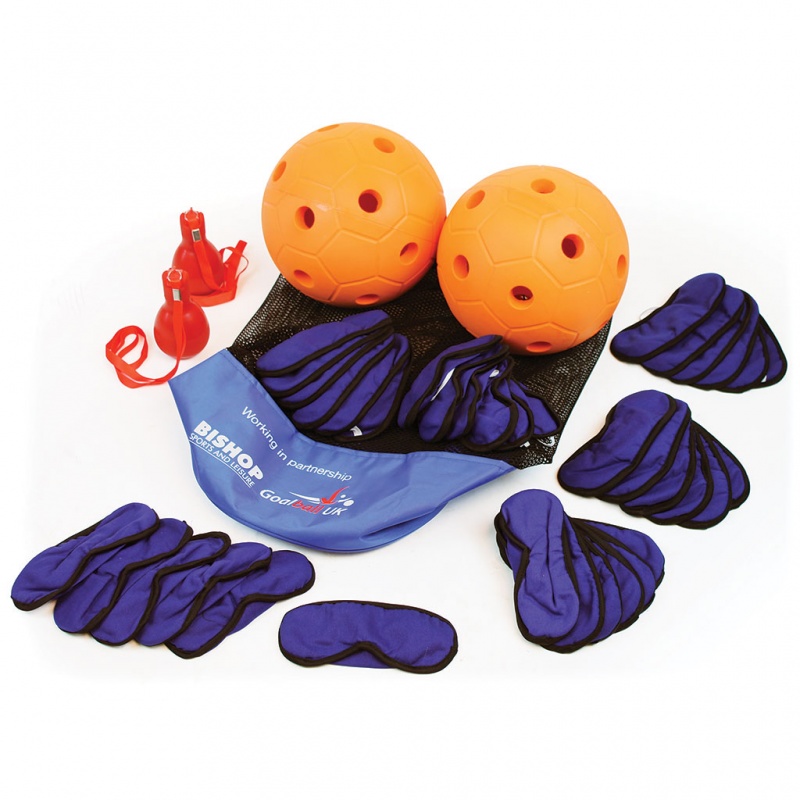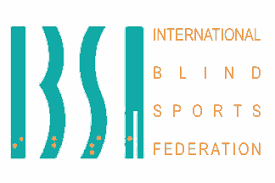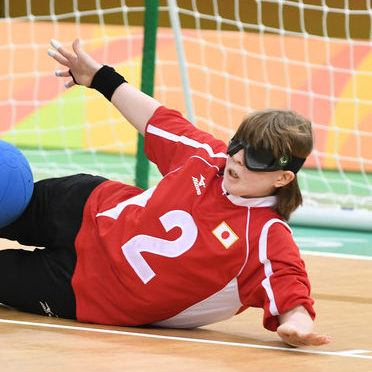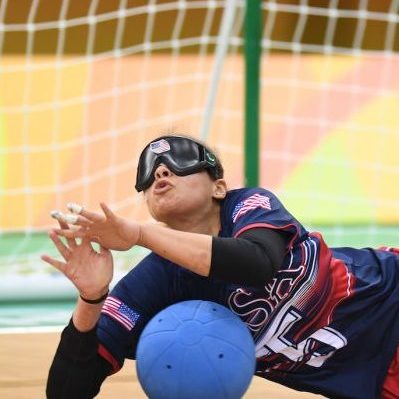Goalball is a team sport designed specifically for athletes with a vision impairment. Participants compete in teams of three, and try to throw a ball that has bells embedded in it into the opponents’ goal. The ball is thrown by hand and never kicked. Using ear-hand coordination, originating as a rehabilitation exercise, the sport has no able-bodied equivalent.
Played indoors, usually on a volleyball court, games consist of twelve-minute halves (formerly ten-minute halves). Teams alternate throwing or rolling the ball from one end of the playing area to the other, and players remain in the area of their own goal in both defence and attack. Players must use the sound of the bell to judge the position and movement of the ball. Eyeshades allow partially sighted players to compete on an equal footing with blind players. Eyepatches may be worn under eyeshades to ensure complete coverage of the eye, and prevent any vision should the eyeshades become dislodged.

